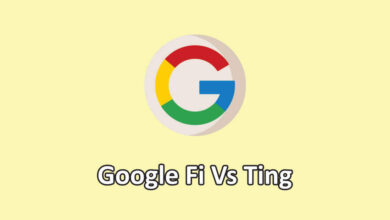Bluetooth Vs WiFi: Unveiling the Wireless War
In our modern era, where wireless connectivity is the heartbeat of our digital interactions, two prominent technologies stand out – Bluetooth and WiFi. Both have become integral parts of our daily lives, seamlessly connecting devices and facilitating communication.
Bluetooth, known for its short-range capabilities, is the go-to technology for linking devices like headphones and speakers. On the other hand, WiFi, with its broader reach, empowers us to connect to the internet and local networks wirelessly, revolutionizing the way we access information.
Bluetooth Vs. WiFi (A Comparison)
| Bluetooth | Wi-fi |
|---|---|
| Bluetooth, known for its short-range capabilities, is the go-to technology for linking devices like headphones and speakers. | WiFi, with its broader reach, empowers us to connect to the internet and local networks wirelessly, revolutionizing the way we access information. |
| It has a limited range, typically up to 100 meters, making it suitable for short-distance communication between devices like headphones and smartphones. | It offers a longer range, reaching several hundred meters, making it ideal for broader coverage in homes and offices. |
| Bluetooth generally provides lower data transfer speeds compared to WiFi. | WiFi, with its higher data transfer speeds, is better suited for tasks such as internet connectivity and large file transfers. |
| It is commonly used for connecting peripherals such as headphones and keyboards to devices like smartphones and computers. | It is primarily employed for internet connectivity and local networking, making it the preferred choice for broader and more data-intensive applications. |
| Bluetooth, especially in its Low Energy version (BLE), is known for low power consumption. | WiFi, on the other hand, generally consumes more power, which may not be ideal for devices that rely on battery power. |
| Bluetooth is less prone to interference since it operates on a different frequency than WiFi. | WiFi, operating on a commonly used frequency, may face more interference in crowded areas with many devices, potentially affecting signal quality. |
What is Bluetooth?
Bluetooth is a wireless communication technology that enables the exchange of data between devices over short distances. In essence, it facilitates seamless connectivity without the need for cables.
Bluetooth operates on radio frequency (RF) technology and is commonly used for connecting devices such as smartphones, headphones, and speakers.
Bluetooth Versions and Features
- Bluetooth 1.0-1.2: The initial versions provided basic data transfer capabilities.
- Bluetooth 2.0 + EDR: Enhanced Data Rate (EDR) for faster data transfer.
- Bluetooth 3.0 + HS: Introduced High-Speed (HS) for enhanced multimedia streaming.
- Bluetooth 4.0: Low Energy (LE) feature for energy-efficient communication.
- Bluetooth 5.0: Improved range, data transfer speed, and enhanced support for IoT devices.
Bluetooth has evolved over the years, adapting to the increasing demands of diverse applications.
What is WiFi?
WiFi, short for Wireless Fidelity, is a technology that allows devices to connect to the internet and local area networks wirelessly. It utilizes radio waves to transmit data between devices, enabling wireless networking in homes, businesses, and public spaces.
WiFi Standards and Features
- 802.11ac: Offers high data transfer rates, improved reliability, and better performance in crowded environments.
- 802.11ax (Wi-Fi 6): Provides enhanced speed, efficiency, and capacity, particularly in environments with multiple connected devices.
WiFi standards are continually advancing to meet the escalating demands for faster and more reliable wireless connectivity.
Key Differences Between Bluetooth and Wi-Fi
- Data Transfer Speed: WiFi generally offers higher data transfer speeds, making it preferable for applications requiring quick and large data exchanges.
- Power Consumption: Bluetooth, especially in its low-energy version, consumes less power compared to WiFi, making it more suitable for battery-operated devices.
- Interference: WiFi signals can face more interference due to the abundance of connected devices, while Bluetooth, operating on a different frequency, may offer a less congested communication channel.
Security Considerations
Security Features in Bluetooth and WiFi
Bluetooth and WiFi, being integral to modern communication, implement robust security features. Bluetooth employs pairing mechanisms, authentication, and encryption to ensure secure data transmission between devices. WiFi, on the other hand, utilizes protocols like WPA3 encryption, WPA2, and WEP, providing various layers of protection for wireless networks.
Risks and Vulnerabilities Associated with Each Technology
Bluetooth Risks:
- Bluejacking: Unwanted sending of messages.
- Bluesnarfing: Unauthorized access to information on a Bluetooth-enabled device.
WiFi Risks:
- Unauthorized Access: Weak passwords may lead to unauthorized users accessing the network.
- Man-in-the-Middle Attacks: Intercepting communication between devices.
Best Practices for Securing Bluetooth and WiFi Connections
Bluetooth Best Practices:
- Firmware Updates: Regularly update device firmware to patch security vulnerabilities.
- Use Strong Passwords: Employ complex and unique passcodes for pairing.
- Turn Off Discoverability: Disable discoverability when not actively connecting to other devices.
WiFi Best Practices:
- Strong Passwords: Set strong, unique passwords for WiFi networks.
- WPA3 Encryption: Implement the latest encryption standards for enhanced security.
- Firmware Updates: Keep router firmware updated to address potential security issues.
Understanding and implementing these best practices is crucial in mitigating the risks associated with Bluetooth and WiFi, ensuring that our wireless connections remain not only convenient but also secure in an increasingly interconnected world.
Conclusion
In conclusion, understanding the distinctions between Bluetooth and WiFi is crucial in navigating the diverse landscape of wireless communication technologies. As technology continues to evolve, staying informed about its features, differences, and security considerations is paramount for ensuring seamless connectivity in our increasingly interconnected world.
Whether it’s the short-range efficiency of Bluetooth or the broader spectrum of possibilities offered by WiFi, each has its unique role in shaping our connected experiences. Embracing the strengths and mitigating the risks of these technologies will undoubtedly contribute to a safer and more interconnected future.



